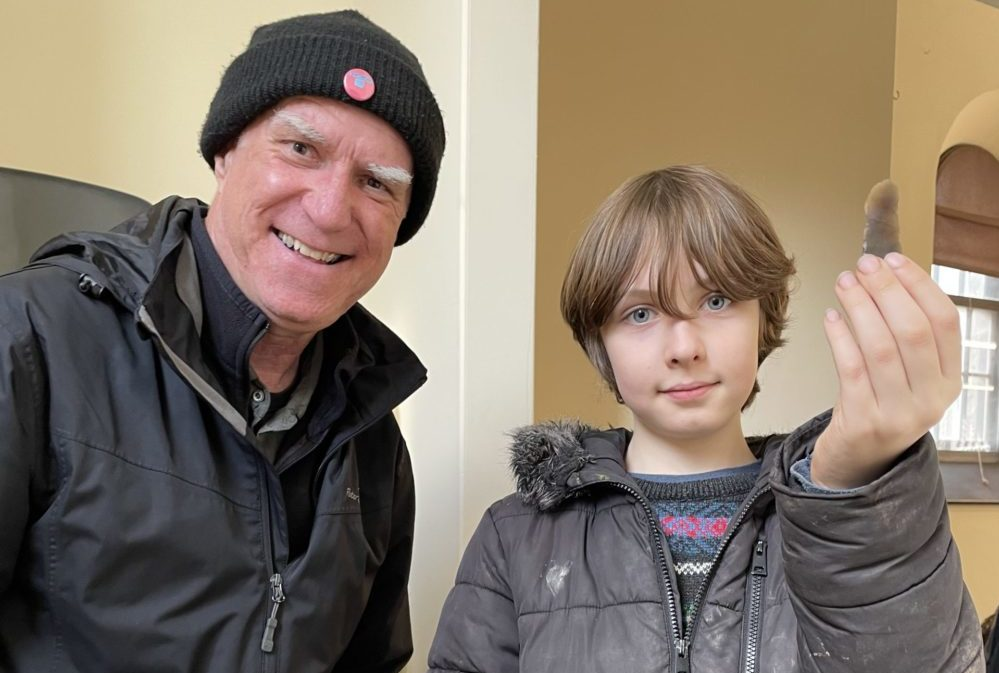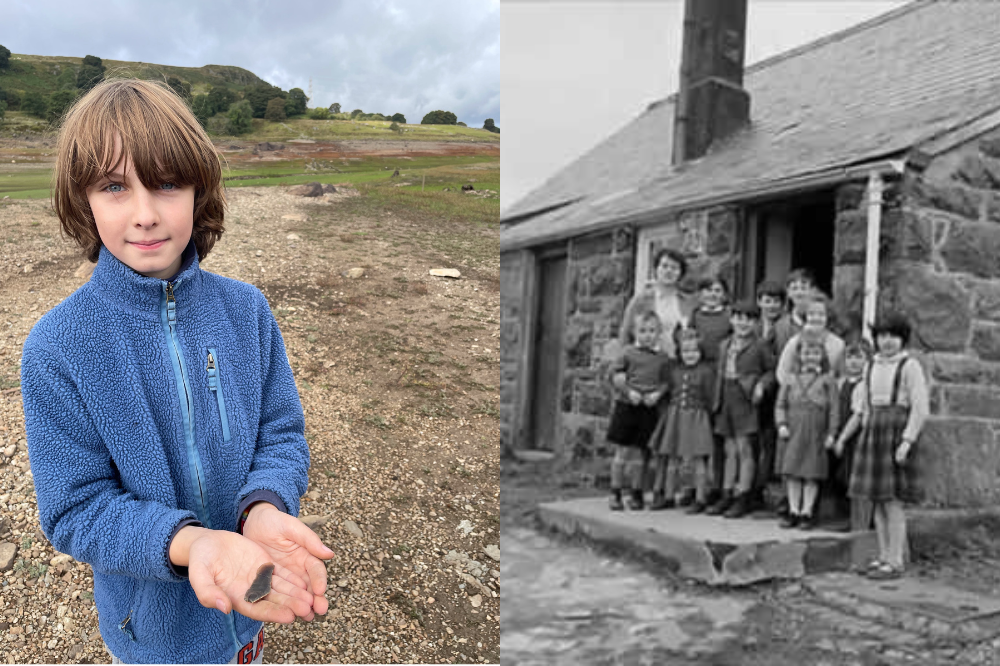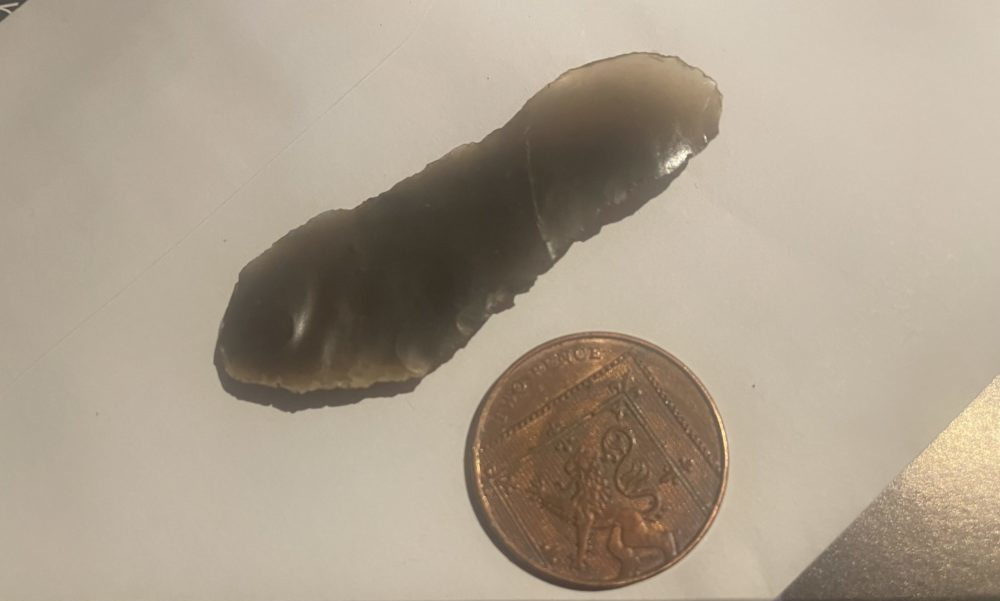In the heart of Wales lies a reservoir, a tranquil expanse of water that belies a tumultuous past. Capel Celyn, near Bala in north Wales, is not just a picturesque setting; it's a site steeped in history, where the echoes of human life resonate through the ages. And it was here, amidst the dry bed of Llyn Celyn, that a remarkable discovery unfolded, illuminating the ancient secrets of this storied land.
Last year's dry summer, with its parched earth and dwindling waters, unveiled more than just the remnants of a forgotten village. It unveiled a glimpse into the distant past, courtesy of 11-year-old Elfyn Wyn, a young enthusiast with a passion for archaeology. Venturing into the exposed landscape, Elfyn's keen eyes fell upon a small, knapped Mesolithic flint blade, nestled amidst the rocks.
Elfyn Wyn and his find and a children from Capel Celyn before they were evicted.
For Elfyn, this was more than just a chance find; it was a connection to a bygone era. With the guidance of his Young Archaeologists Club membership, he recognized the significance of the artifact. Flint, not native to Wales, spoke volumes about human presence in the region centuries ago. And so began a journey of discovery that would unravel the mysteries of Capel Celyn's past.
Seeking answers, Elfyn reached out to archaeologist and radio presenter Rhys Mwyn, who identified the blade as a relic from the Neolithic or even Mesolithic period. This revelation opened a window into a forgotten time when hunter-gatherers roamed the wooded landscape, forging a life intertwined with nature's bounty.
The discovery of the flint blade paints a vivid picture of ancient life in Wales. It speaks of a people who traversed water routes, following the flow of rivers like the Tryweryn into the uplands. These intrepid souls, armed with flint tools, navigated a landscape teeming with wildlife, sustaining themselves on fish, wild boar, and the majestic creatures that once roamed these lands.
But beyond its archaeological significance, Elfyn's find offers a glimpse of hope amidst the drought-stricken landscape. In a world where climate change threatens to erase traces of our past, the discovery of such artifacts becomes all the more poignant. It is a reminder that beneath the surface lies a wealth of history waiting to be unearthed, a testament to the enduring resilience of the human spirit.
Elfyn Wyn’s find
As David Howell of the National Museum of Wales aptly states, Elfyn's discovery is more than just a blade; it's a testament to the enduring presence of humanity in the Capel Celyn area. It stands as a beacon of hope, guiding us through the annals of time and reminding us of our shared heritage.
In the wake of Elfyn's discovery, the landscape of Capel Celyn takes on new meaning. It becomes not just a reservoir, but a living testament to the rich tapestry of Welsh history. And as the waters ebb and flow, revealing glimpses of the past, we are reminded of the profound legacy that lies beneath our feet, waiting to be uncovered.









